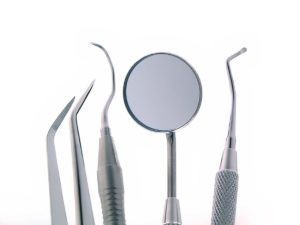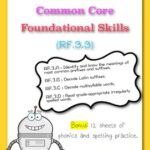The world of dental tools can seem intimidating. The whirring sounds and peculiar shapes in a dentist’s office often trigger anxiety. However, understanding the purpose of each instrument can significantly ease your dental visits. This guide offers a brief overview of common dental tools, aiming to calm your nerves by clarifying their function.
Mouth Mirror
The mouth mirror is arguably the least frightening, yet essential, dental instrument. This tool comprises a small mirror attached to a metal handle. It serves two primary functions: providing the dentist with an indirect view of areas in your mouth that are otherwise difficult to see, enabling the detection of decay or potential oral issues. Secondly, it allows the dentist to gently retract your tongue or cheek, enhancing visibility without direct contact with their hands.
 Dental mouth mirror
Dental mouth mirror
Sickle Probe (Dental Explorer)
The sickle probe, also known as a dental explorer, might appear daunting, but it plays a crucial role in detecting cavities and periodontal (gum) disease. Featuring a long handle with a sharp, hooked end, this instrument is primarily used to explore the pockets between teeth and scrape away tartar and plaque. Dentists may also use its sharp tip to investigate visible cavities. While its appearance may be unsettling, the sickle probe is an essential tool for preventative dental care.
Scaler
While the sickle probe excels at removing small plaque and tartar deposits, scalers are more effective for addressing larger accumulations. Patients requiring scaling often exhibit more pronounced periodontal issues. Plaque buildup occurs when food and drink particles, such as sugars and acids, adhere to teeth, fostering bacterial growth. While brushing and flossing help remove most plaque, supplementary removal is sometimes necessary. A scaler scrapes off excess plaque, a process that may cause some discomfort but is vital for preventing tooth decay and maintaining oral health.
Saliva Ejector (Suction Device)
The saliva ejector, or suction device, is generally a more manageable instrument and often a source of slight amusement. Dentists often need a dry surface to examine the mouth effectively. This device consists of a long tube connected to a vacuum, which removes saliva from your mouth. While the vacuum sounds and the sensation of the ejector sticking to your cheek or tongue might be noticeable, they are usually not alarming. During procedures involving water, you may be instructed to close your mouth to facilitate the removal of accumulated water.
Dental Drill
Perhaps the most dreaded instrument, the dental drill, can induce anxiety in many patients. The sound alone is often enough to cause discomfort. However, it remains the most effective method for removing tooth decay before filling a cavity. This electric drill rotates at speeds exceeding 250,000 rpm while simultaneously spraying water into your mouth. The water is essential to prevent overheating, which could damage the tooth. While the drill’s vibrations can feel uncomfortable, it’s generally painless when used with a local anesthetic.
Dental Syringe
Speaking of anesthetics, the dental syringe delivers the numbing agent to your mouth. Dental syringes are slightly longer than typical needles to ensure precise anesthetic delivery. As with any injection, the initial prick may cause momentary discomfort, which is quickly alleviated by the anesthetic. If you are sensitive to needles, it’s best to avoid looking at the syringe. The injection process is swift and should not be a cause for significant fear. Many dentists also apply a topical anesthetic beforehand to minimize the sensation of the initial needle prick.
Molds (Impressions)
If you require a crown, cap, or mouthguard, your dentist may need to take a mold, or impression, of your teeth. These molds are harmless. They consist of small frames filled with a soft material placed in your mouth. Biting down on the mold creates a perfect replica of your teeth. While the molding material may not have the most appealing taste, it is tolerable for a short period. Some dentists even offer flavored versions for children.
By familiarizing yourself with these common dental tools, you can approach your dental visits with less anxiety. These instruments, wielded by dental professionals, are designed to maintain your oral health. While some may appear or sound intimidating, they often come with mitigating factors like anesthetics to ensure your comfort. You might even impress your dentist with your newfound knowledge of these instruments.

